The 10 Most Popular Cat Breeds in the United States
With over 95 percent of cats in this group, it isn’t even a competition.
With over 95 percent of cats in this group, it isn’t even a competition.
by Alicia Kort, | March 4, 2024
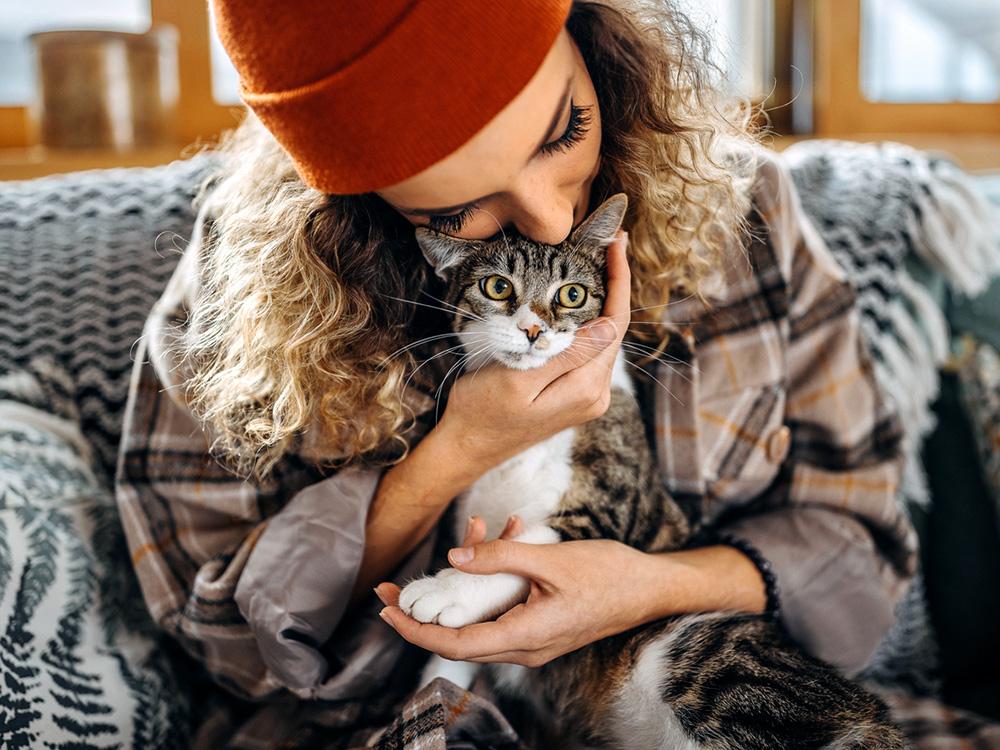
Pekic / iStock
You might be aware of what the most popular dog breeds in America are, because you see French Bulldogs, Golden Retrievers, and German Shepherds walking around your neighborhood. Aside from the rare leashed cat sighting or the local windowsill kitty we smile at when we walk by, we don’t really get a sense of what breeds pet parents are bringing home. To get to the bottom of what the most common cat breeds are, we rounded up the top 10 cat breeds in America. Although, frankly, there is one cat breed that has taken over American homes (and hearts) and has the other cat breeds beaten by a long shot.
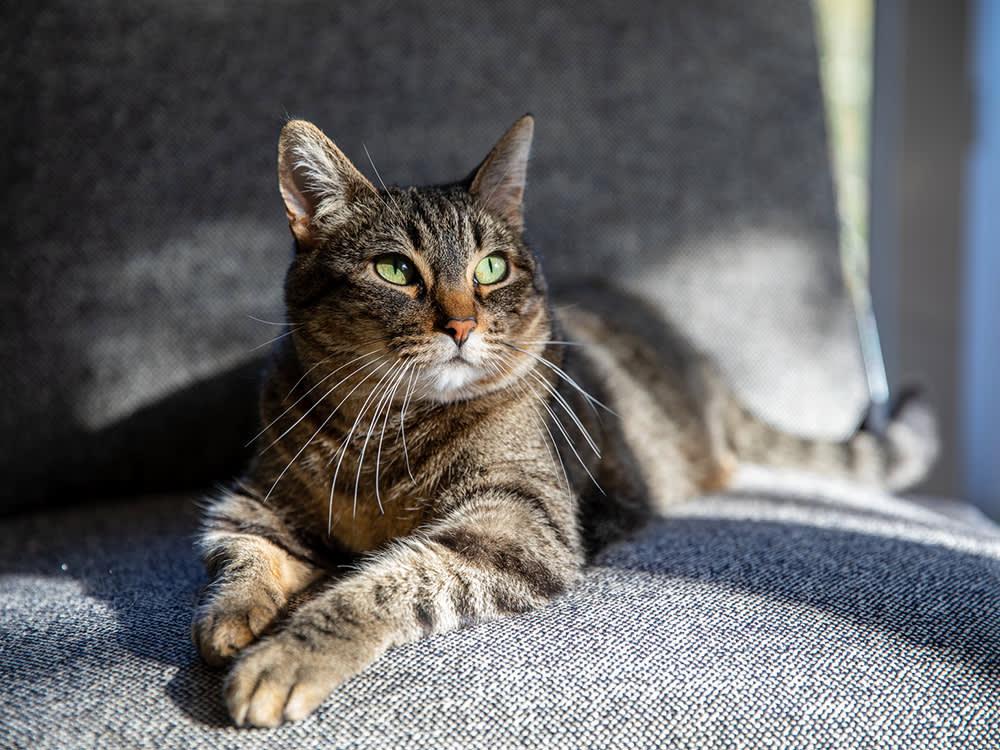
Carolyn Lagattuta / Stocksy
The most popular cat in America is the Domestic Shorthair, and they have every other cat breed so soundly beaten that they would have already been snoozing for hours at the finish line by the time the second most popular cat breed crossed it. That’s because the Domestic Shorthair makes up a whopping 95 percent of all U.S. cats. It isn’t even a competition. This mixed-breed cat is known as the first domestic cat, dating all the way back to Ancient Egypt, and can come in many different colors and patterns. So, when you go over to your friend’s house to visit the cat they adopted, you’re likely looking at a Domestic Shorthair. They make loving family companions.
Here are the most popular purebred cat breeds as ranked by the Cat Fanciers’ Association.
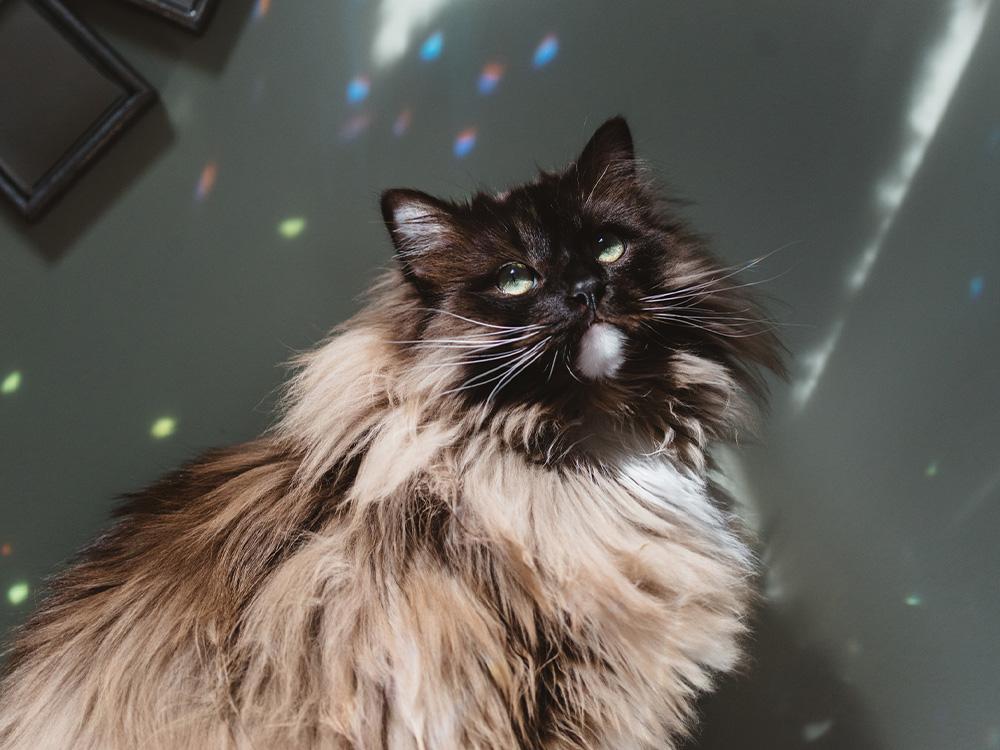
Chelsea Victoria / Stocksy
The Ragdoll breed got its name from this type of cat’s tendency to go limp in their person’s arms. Unlike some other cat breeds, they love to be held and coddled. This highly affectionate cat breed is known for their patience and gentleness, which means they make great pets in households with children, though kids should be taught how to interact with cats. This type of cat is considered large, and though they are relatively calm, Ragdolls still love to play and are highly intelligent. They’re also known for their bright blue eyes, fluffy tails and long, low-shedding coats that do still require regular brushing.
Weight: 10 to 20 pounds
Lifespan: 13 to 18 years
Breed characteristic: Easygoing

Valeria Boltneva / Pexels
The Maine Coon is a majestic, fluffy medium-to-large-sized cat. You’ve definitely seen photos of Maine Coon parents demonstrating how long their cat is — this breed holds the record for the world’s largest cat. The breed’s tendency to be laidback makes them a great addition to families with kids and other pets. Maine Coons are highly intelligent, affectionate, playful, and vocal. Don’t be surprised if this kitty becomes your shadow and follows you from room to room, because Maine Coons always like to be close by, much like a dog. And that’s not where the similarities between Maine Coons and dogs end — these kitties often love water and will willingly go for a swim.
Weight: 9 to 18 pounds
Lifespan: 12 to 15 pounds
Breed characteristic: Dog-like
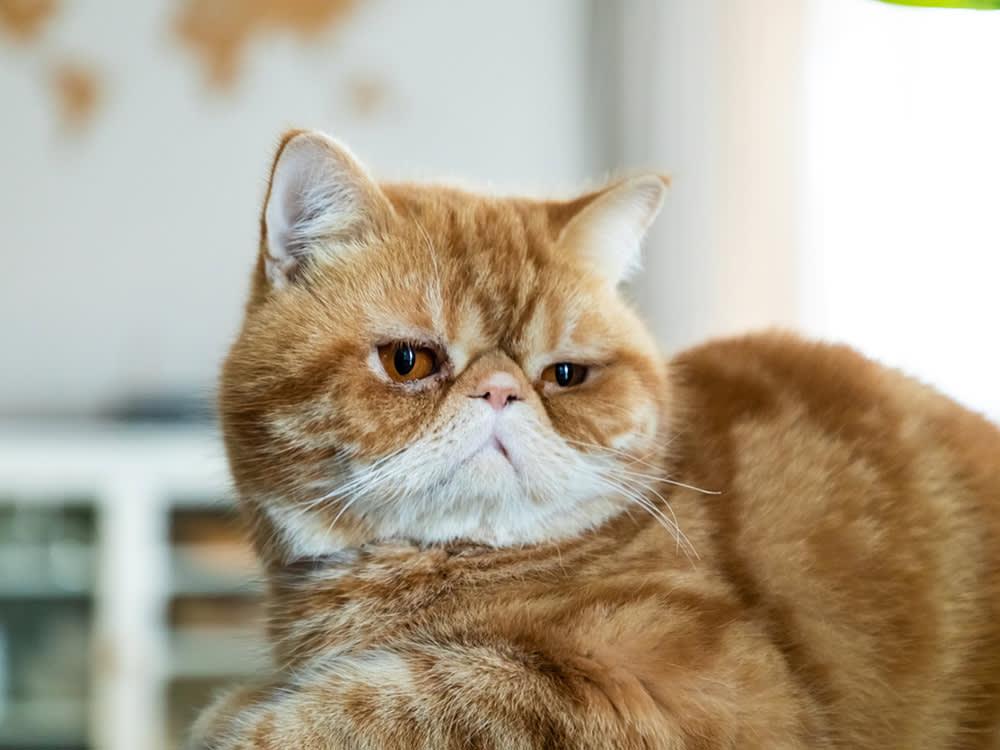
merteren / iStock by Getty Images
The Exotic Shorthair is a cousin to the long-haired Persian cat, but differs slightly in personality and fur-length. If you want a Persian but worry about their fur upkeep, the Exotic Shorthair is a better fit for you. Exotic Shorthairs only require a weekly brushing and still boast similar smushed facial features, large paws, and a short, thick tail, all of which Persians are also famous for. The Exotic Shorthair is loving, relaxed, and honestly a bit more active than Persians. They do still love to play, but they are happy in any sized home and can coexist peacefully with children and other pets, if they are socialized early enough.
Weight: 10 to 12 pounds
Lifespan: 8 to 15 years
Breed characteristic: Low-maintenance
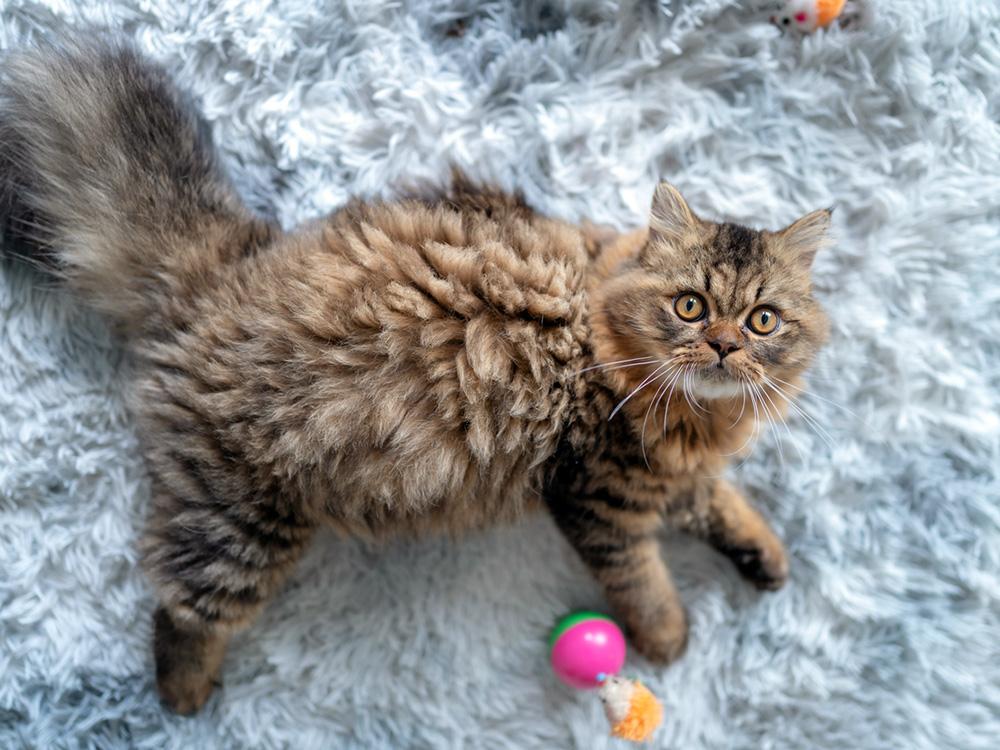
TwilightShow / Shutterstock
When you think of a Persian, a long-haired white cat with bright blue eyes might come to mind, but Persians can be a myriad of colors. The characteristic they all share is their long coats, which require daily brushings with two different types of brushes to ensure that no mats form in their long fur and regular bathing. If a potential pet parent isn’t willing to commit to this more elaborate routine, they should opt for another cat breed instead. And though this kitty loves to spend time with their people, they also love to relax and get a lot of shut-eye.
Weight: 7 to 12 pounds
Lifespan: 15 to 20 years
Breed characteristic: Ultimate lounger
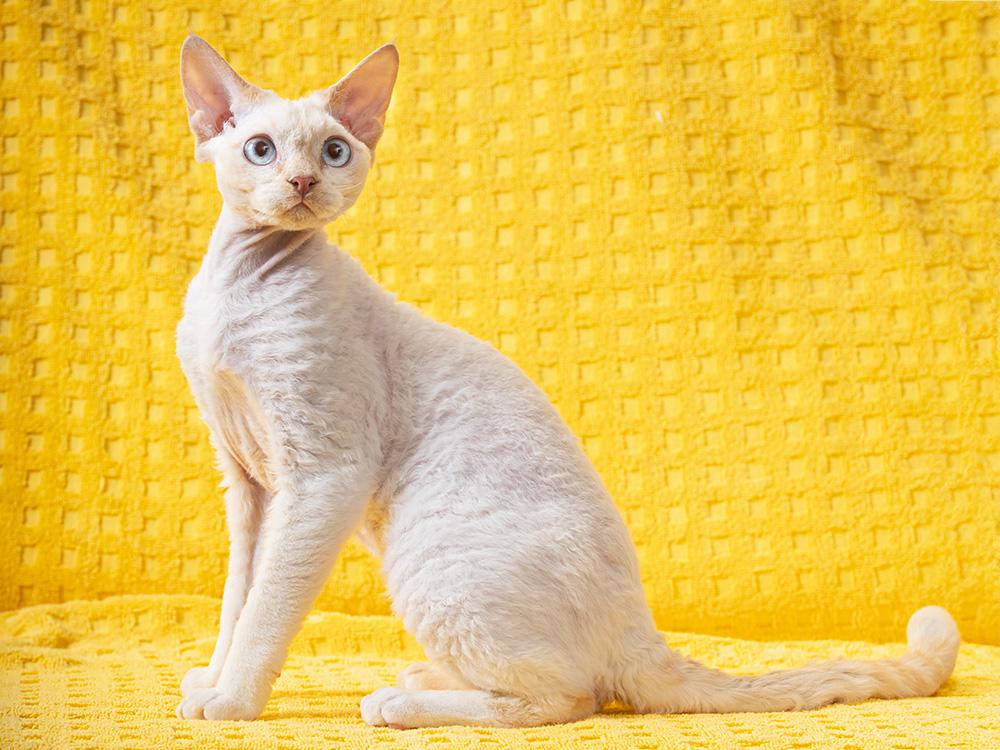
Grigory Bruev / AdobeStock
The Devon Rex is a petite cat breed that is known for having bat-like ears, a short triangular chin, and a short, scraggly tail. This little kitty fairs best in homes with other pets but not children, because they’re a bit delicate. And though this cat is not technically hypoallergenic, their short, low-shedding coat makes them a great cat breed option for those who suffer from allergies. Despite being on the smaller side for domestic cats, the Devon Rex has a vibrant personality and a lot of energy, so cat parents should be ready for playtime. They also prefer to lounge on high, out-of-reach perches, so be sure to provide those for the Devon Rex.
Weight: 6 to 9 pounds
Lifespan: 9 to 15 years
Breed characteristic: Tiny
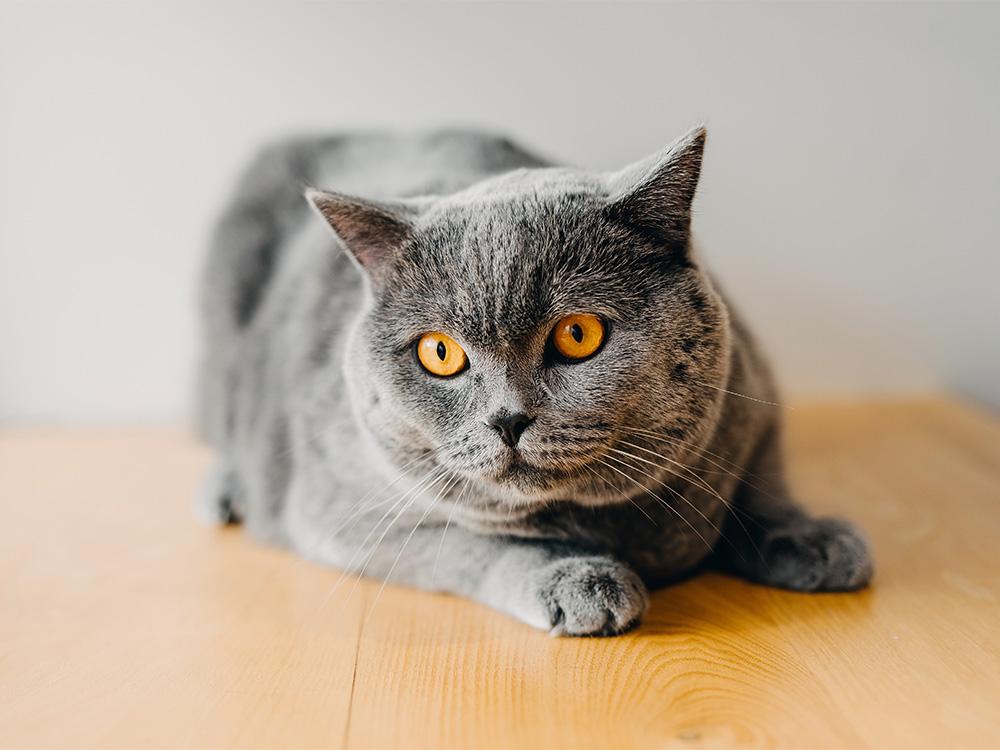
Bostan Natalia / AdobeStock
The British Shorthair, which was Britain’s first domesticated cat, boasts a mix of qualities that makes them the most adaptable cat on this list. They are friendly, get along well with both other animals and children, can live in any size of space, like to play but aren’t hyperactive, and have a low-maintenance coat that barely requires any brushing. These medium-to-large-sized cats are known for their chubby cheeks and shorter ears. They can come in a variety of colors, though the British Blue is the most famous.
Weight: 7 to 17 pounds
Lifespan: 12 to 16 years
Breed characteristic: Friendly
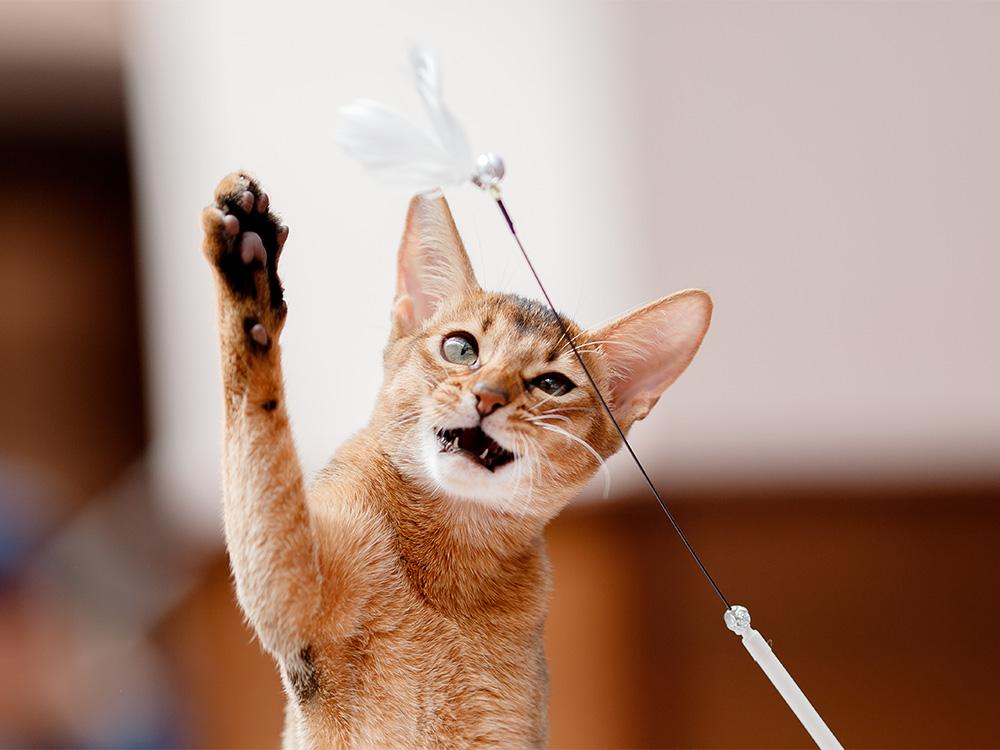
Parilov / Adobe Stock
Boasting a playful personality and the ability to jump high, the Abyssinian looks more like an exotic cat breed, even though it’s a domesticated one. This breed has a “ticked” coat, which means different hairs are banded with other colors, and bright green or gold eyes. The Abyssinian, called “Aby” for short, is such a social cat that it’s recommended that this breed have another feline playmate, so the Abyssinian won’t grow anxious and destructive when left alone. Abyssinians want to play almost as much as a dog does, so be prepared to shower this kitty with toys, cat trees, and quality time.
Weight: 6 to 12 pounds
Lifespan: 10 to 15 years
Breed characteristic: Most playful
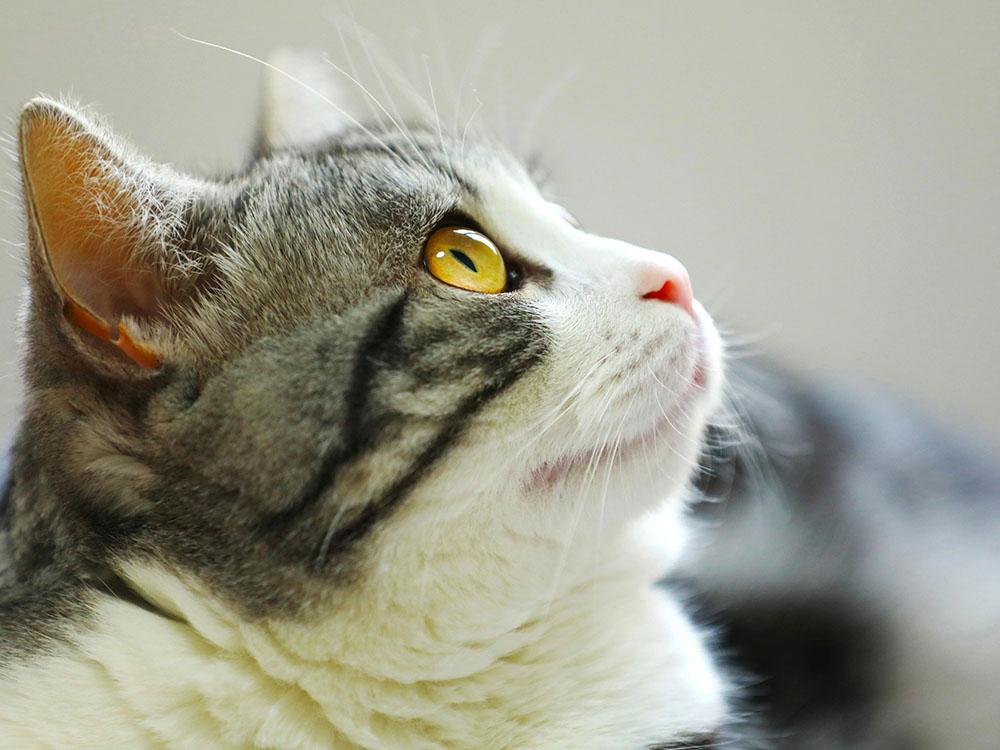
WEI WU / Pexels
American Shorthairs often have round faces with wide, welcoming eyes. They can be a wide variety of coloring, including calico, tabby, and tortoiseshell. This breed is known for being affectionate yet independent. They like to socialize on their terms and do like to be left alone to their own devices on occasion, but they aren’t couch potato kitties — they enjoy playing with their people and getting the zoomies. Despite being a shorthair cat, the American Shorthair does boast a thick coat that needs regular brushing, because it will shed, especially in the summer.
Weight: 6 to 15 pounds
Lifespan: 15 to 20 years
Breed characteristic: Super gentle
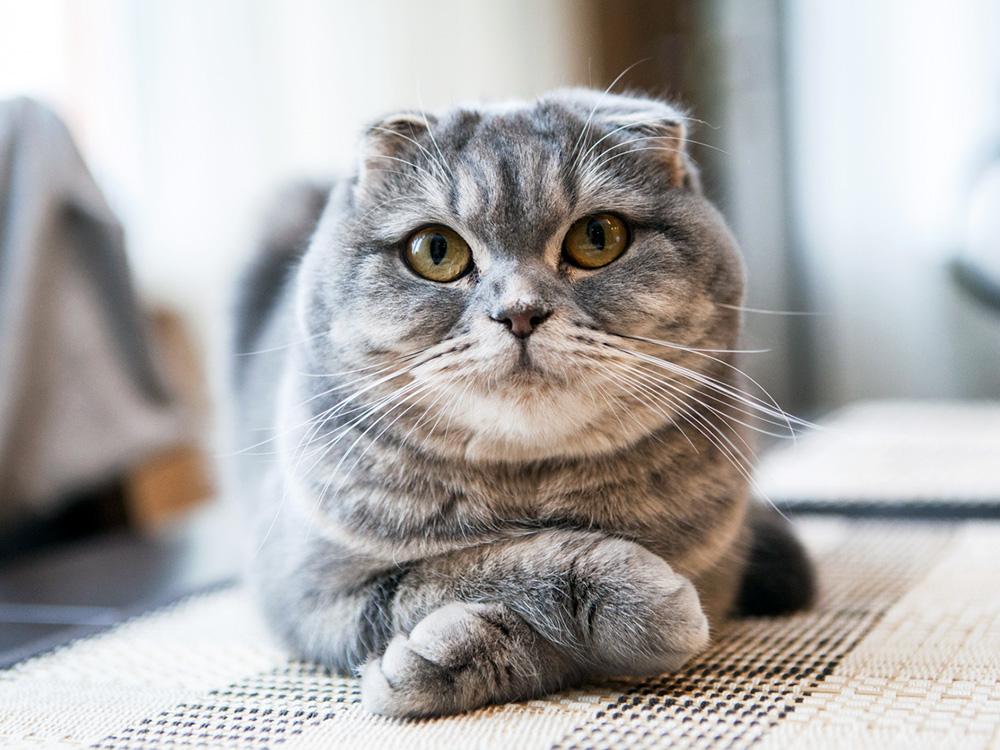
lafar / Shutterstock
The Scottish Fold is famous for its folded-over ears, which almost make them appear like an earless cat. They are highly intelligent and need mental stimulation and companionship because they can develop separation anxiety. This means that they thrive in homes with other cats and homebody pet parents. They are playful and have fun personalities — with a tendency to sit up like a Meerkat or splay out on their backs like a dog, which will no doubt be documented in the cat parents’s camera roll. The Scottish Fold has a thick, soft, and plush coat, which requires regular brushing. This cat goes through shedding seasons when they will require more brushing.
Weight: 6 to 13 pounds
Lifespan: 11 to 15 years
Breed characteristic: Owl-like appearance
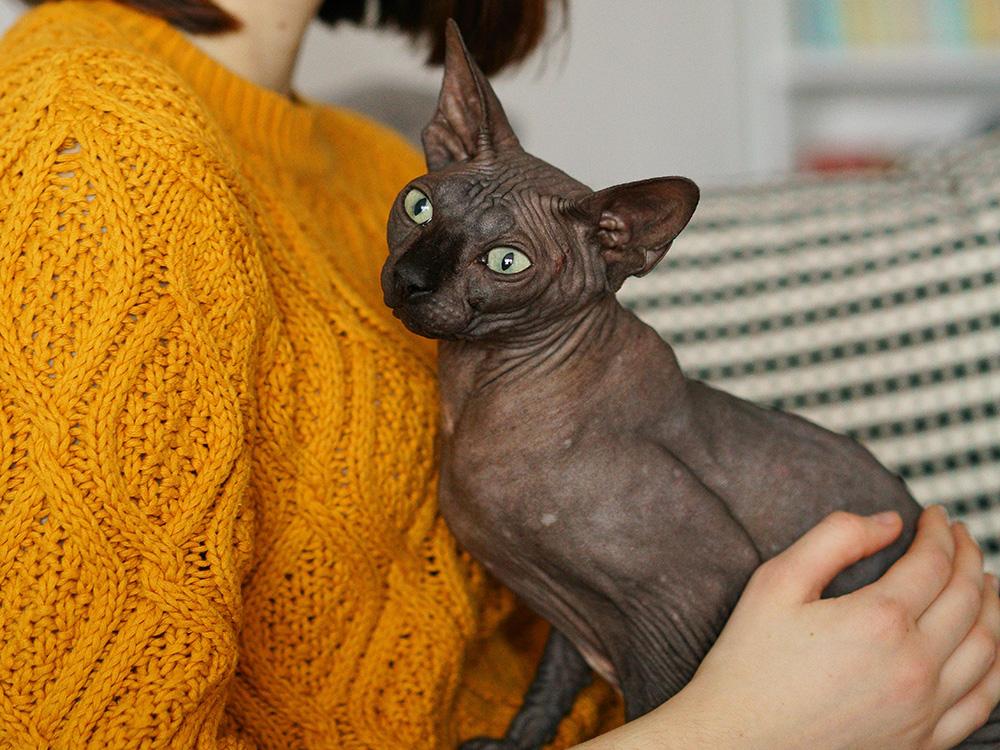
ArtHouse Studio / Pexels
The Sphynx cat is easily identifiable by its lack of fur. That isn’t to say that the Sphynx cat is hairless; they do have a layer of short “peach fuzz” on their bodies that can vary in color. Sphynx cats’ skin can also vary in color; they can be brown or black as well. But just because they’re virtually hairless doesn’t mean they have a low-maintenance grooming routine. In fact, they require weekly baths to wash away the oil build-up on their skin and need their ears gently cleaned out once per week. In return, this kitty will provide so much love and affection. The Sphynx will always try to sit on their person’s lap when it’s available and love to play. They are adaptable kitties who thrive around families and other pets.
Weight: 6 to 12 pounds
Lifespan: 8 to 14 years
Breed characteristic: Hairless
You should opt to choose a cat who best fits your home, your lifestyle, and your needs. Here are five tips to help you decide:
Cost: Although it may not seem like a cat is an expensive pet, potential cat parents should have a fund set aside for emergency vet visits. So we would recommend being realistic about how much having a cat could cost. For example, an adult indoor-only cat will cost around $300 a year after the initial supplies are bought.
Space: Certain breeds of cats require more space than others. Some cats, such as the Persian, are more than happy in a small apartment, while others require a home to roam around.
Allergies: Are you allergic to dust or pet dander? Then you should consider getting a low-shed cat (or nearly hairless one, such as the Sphynx). Even shorthair cats can have dense coats that shed, so don’t just assume that because a cat seems to have short fur that they won’t shed.
Lifestyle: Ask yourself how often you’re home. If you’re often out and about, you shouldn’t adopt a single cat that suffers from separation anxiety, instead, adopt a pair of cats so they have a buddy when you aren’t home. Just because cats have the reputation of being lower maintenance doesn’t mean that they don’t miss their people.
Children: Certain breeds of cats, such as the Maine Coon and Exotic, are better suited to interact with children than others. Regardless of which cat breed you choose, if you have children you should teach them how to interact with cats respectfully.
After you determine what type of cat or cats you’d like, you can adopt a cat from Adopt a Pet or from shelters and rescues across the country. Otherwise, we recommend finding a reputable organization to help you locate your new BFF.
There isn’t one, but some of the most common colors in cats are tuxedo (black and white), tabby (typically brown with stripes), and calico (a mix of orange, black, and white). Black cats are also often found in shelters because of old and untrue superstitions about their association with witchcraft.
The most common cat is the Domestic Shorthair, who make up to 95 percent of the cat population. These can vary widely in color.
The most famous cat breed is the Ragdoll, according to the Cat Fanciers’ Association, with the Maine Coon and the Devon Rex rounding out the top three.
There are 73 different breeds of domesticated cats, according to The International Cat Association.
Spots, Stripes and Blotches: Color Patterns of Cat Fur Tracked to a Key Gene

Alicia Kort is a writer and editor living in Brooklyn. She’s currently the senior commerce editor at Apartment Therapy. She’s been published in StyleCaster, Electric Literature, Newsweek, Interview, Brooklyn magazine and more. In her free time, she runs, reads, and spends time with her dog-nieces, Maya and Lady, and her cat-niece, Pepper.